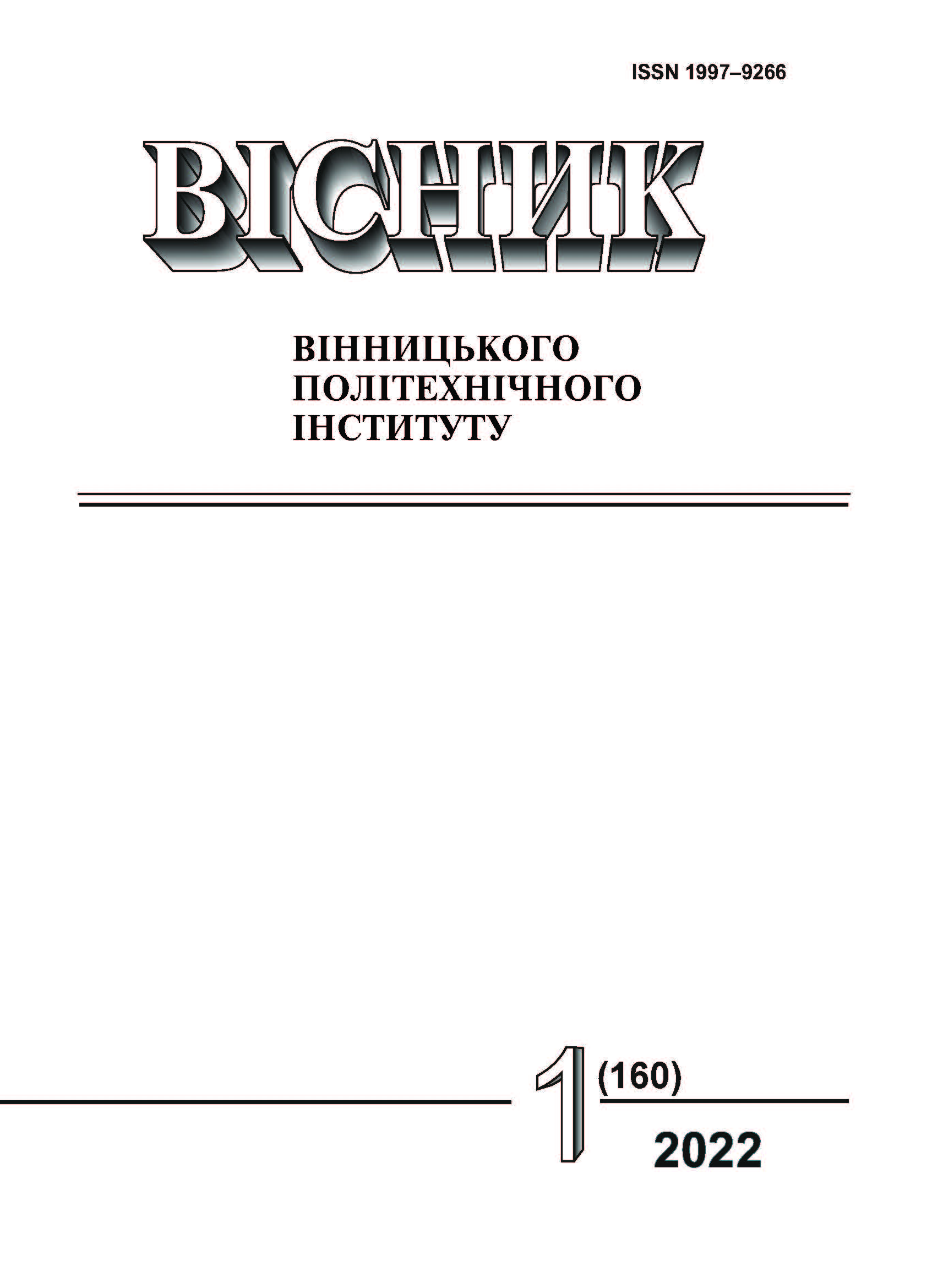ЛАБОРАТОРНІ ДОСЛІДЖЕННЯ КОМБІНОВАНОГО МЕТОДУ ЗНЕВОДНЕННЯ ВНУТРІШНІМИ ДЖЕРЕЛАМИ ТЕПЛОТИ В УМОВАХ ЕЛЕКТРИЧНОГО НАГРІВУ
DOI:
https://doi.org/10.31649/1997-9266-2022-160-1-21-27Ключові слова:
сушильні установки, енергоефективність, тонкодисперсні матеріалиАнотація
Постійне погіршення якості залізних руд викликає необхідність переробки важкозбагачуваних корисних копалин, що вимагають глибокого збагачення, і ускладнює зневоднення. На вуглезбагачувальних фабриках широко застосовують процеси, які відбуваються у водних середовищах. В результаті цих процесів після відокремлення мінеральних домішок у вугіллі залишається значна кількість баласту — води. Тому завершальними операціями в процесах збагачення є механічне і термічне зневоднення продуктів збагачення вугілля, насамперед вугільних концентратів та шламів. При цьому основну складність становить сушіння флотоконцентрату (0…0,5 мм) і дрібного концентрату (0,5…6 мм), які мають після механічного зневоднення залишкову вологість 23…27 % і близько 13 % відповідно, що зумовлює необхідність додаткового теплового сушіння, від способу і апаратурного оформлення якого залежать якість вугільного концентрату, витрата палива, енерго- і металоємність процесу. Використання термічного сушіння для зневоднення продуктів збагачення пов’язано з різким збільшенням капіталовкладень та витрат дефіцитних енергоносіїв, що в умовах сучасного ринку сировини і стану економіки недоцільно. Зневоднення фільтрацією на вакуум-фільтрах, яке отримало повсюдне поширення на збагачувальних фабриках, не дозволяє отримати продукти збагачення кондиційної вологості. За підвищеної вологості концентрату збільшуються витрати на транспортування його споживачеві, а в зимовий час можливе його змерзання у залізничних вагонах. Розробка ефективних методів сушіння і термообробки дисперсних матеріалів набуває важливого практичного значення з огляду на високі вимоги, які висуваються до якості готової продукції і необхідністю переходу до енерго- і ресурсозбережних технологій. Великою проблемою є зневоднення осадів шламової крупності, тому що наявні методи фільтрації для цього малопридатні. Отже встановлення закономірностей процесу зневоднення тонкодисперсних матеріалів є актуальним науковим завданням.
Посилання
А. Д. Полулях, «Особенности современных технологий углеобогащения,» Збагачення корисних копалин, наук.-техн. зб., Дніпропетровськ, вип. 17 (58), с. 3-6, 2003.
В. А. Жужиков, Фильтрование. Теория и практика разделения суспензий, Москва: Химия, 1980, 398с.
С. Э. Фридман, О. К. Щербаков, и А. М. Комлев, Обезвоживание продуктов обогащения, Москва: Недра, 1988, 240 с.
Е. Е. Гарковенко, и др. Особенности флотации и обезвоживания тонкодисперсных углесодержащих материалов, Донецк, Украина: Норд-Пресс, 2002, 266 с.
П. И. Пилов, «Распределение частиц твердой фазы в турбулентном потоке жидкости при выделении осадка,» Науковий вісник НГА України, № 1, с. 74-77, 1998.
А. Д. Полулях, и О. В. Ищенко, «Состояние подготовки и обогащение машинных классов рядового угля в Украине,» Збагачення корисних копалин, наук.-техн. зб., вип. 23 (64), с. 21-26, 2005.
А. С. Кофанов, и др., «Пути снижения влажности флотоконцентрата и тонкого шлама,» Збагачення корисних копалин, наук.-техн. зб., вип. 23 (64), с. 142-146, 2005.
А. В. Лыков, Теория сушки, Москва: Энергия, 1968, 472 c.
Б. С. Сажин, и В. Б. Сажин, Научные основы техники сушки, Москва: Наука, 1997, 448 с.
В. И. Коновалов, Т. Кудра, и Н. Ц. Гатапова, «Новые зарубежные исследования в области сушки и термообработки: результаты и тенденции,» Вестн. Тамб. гос. техн. ун-та, т. 14, № 3, с. 530-537, 2008.
Т. Ф. Киселева, Технология сушки: Учебно-методический комплекс, Кемеровский технологический институт пищевой промышленности, Кемерово, 2007, 117 с.
М. Д. Герасимов, М. П. Покушалов, и А. Л. Покушалов, «Устройство сушки», RU 2459164 C1. 20.08.2012.
К. А. Данилов, Д. Р. Кривошеев, и Е. В. Гусев, «Аппарат для сушки дисперсных материалов», Молодые ученые — развитию текстильно-промышленного кластера, № 1, с. 502-504, 2016.
[14] А. И. Сокольский, Е. В. Гусев, и О. Б. Колибаба, «Условия и конструктивные меры масштабного перехода от лабораторных установок к промышленным образцам при проектировании сушильных агрегатов вихревого типа,» Вестник Ивановского государственного энергетического университета, № 2, с. 22-29, 2020.
С. Ф. Шинкоренко, Е. П. Белецкий, и А. А. Ширяев, Справочник по обогащению руд черных металлов, Москва: Недра, 1980, 482 с.
О. В. Замицький, «Экологически чистый способ доводки тонкодисперсных продуктов обогащения по влажности.» Москва, МГГУ, № 3, с. 82-84, 1995.
О. В. Замицький, «Разработка способа и технических средств доводки по влажности тонкодисперсных продуктов обогащения прямым воздействием переменного электрического тока.» дис. канд. техн. наук., Криворожский технический университет, Кривой Рог, 1995, 29 с.
##submission.downloads##
-
pdf
Завантажень: 198
Опубліковано
Як цитувати
Номер
Розділ
Ліцензія

Ця робота ліцензується відповідно до Creative Commons Attribution 4.0 International License.
Автори, які публікуються у цьому журналі, згодні з такими умовами:
- Автори зберігають авторське право і надають журналу право першої публікації.
- Автори можуть укладати окремі, додаткові договірні угоди з неексклюзивного поширення опублікованої журналом версії статті (наприклад, розмістити її в інститутському репозиторії або опублікувати її в книзі), з визнанням її первісної публікації в цьому журналі.
- Авторам дозволяється і рекомендується розміщувати їхню роботу в Інтернеті (наприклад, в інституційних сховищах або на їхньому сайті) до і під час процесу подачі, оскільки це сприяє продуктивним обмінам, а також швидшому і ширшому цитуванню опублікованих робіт (див. вплив відкритого доступу).





